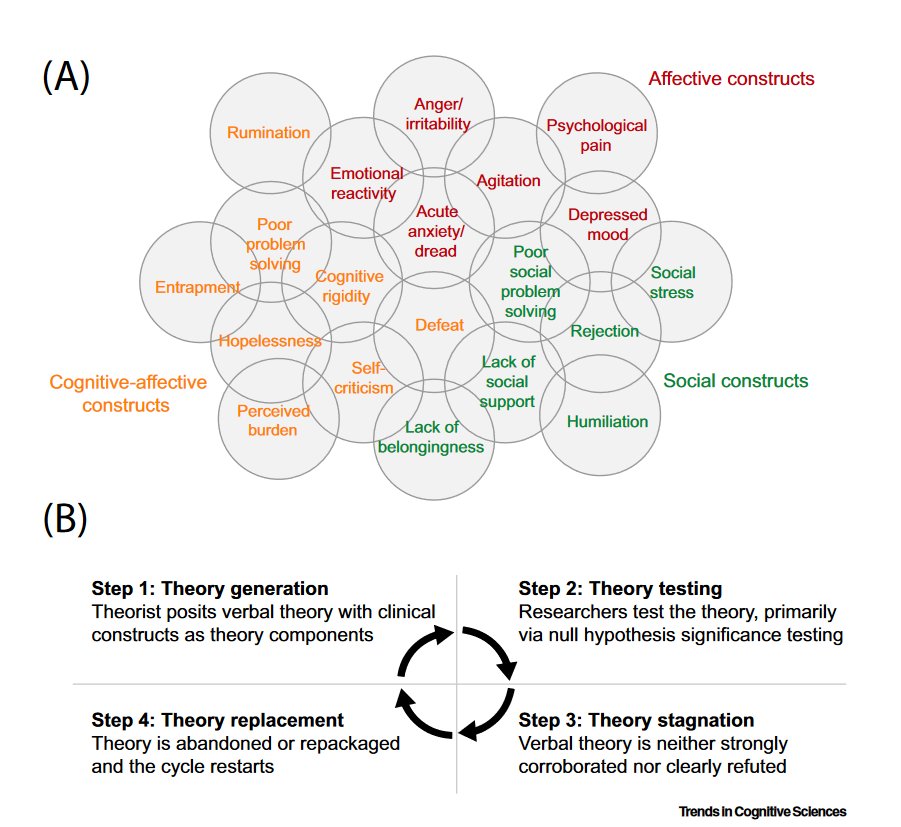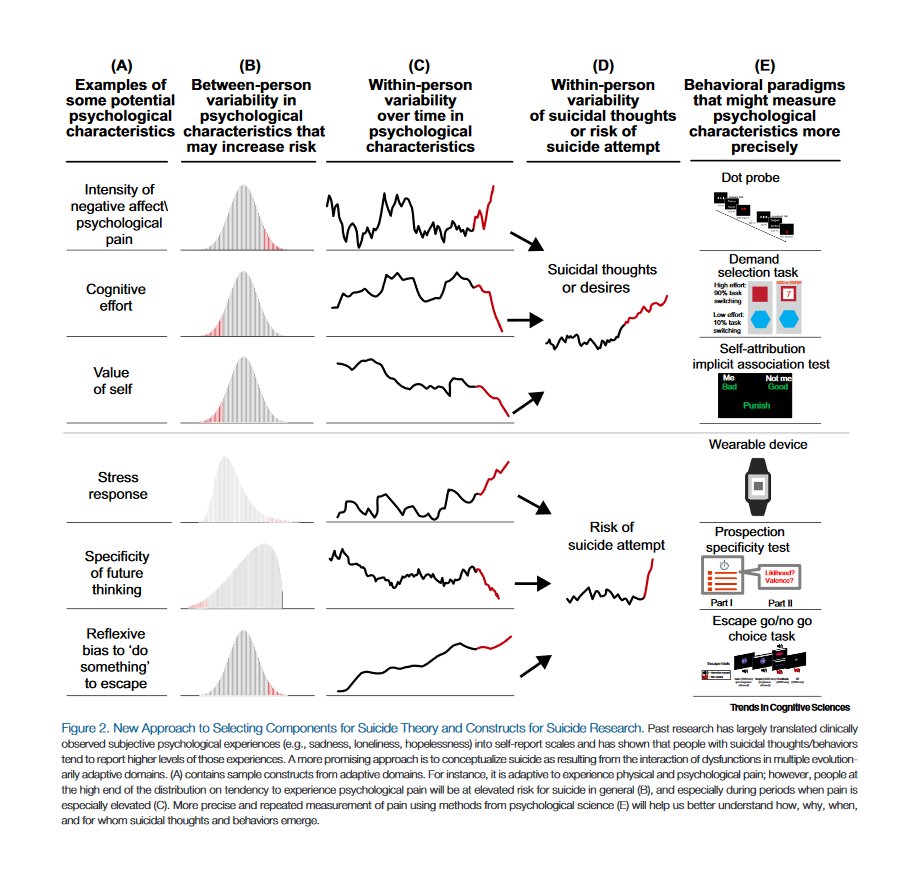[ @netECR Journal Club Thread]
1/7
Today we had a fantastic chat in our journal club session on the paper "Advancing the Understanding of Suicide: The Need for Formal Theory and Rigorous Descriptive Research" by Milner et al.
Here are some thoughts shared during the session:
1/7
Today we had a fantastic chat in our journal club session on the paper "Advancing the Understanding of Suicide: The Need for Formal Theory and Rigorous Descriptive Research" by Milner et al.
Here are some thoughts shared during the session:
2/7
"...theory components are generally a few of many intercorrelated and largely overlapping constructs that describe anadverse psychological state". Most of us agree that qualitative researchers have a fundamental role here in gaining richer conceptual descriptions.
"...theory components are generally a few of many intercorrelated and largely overlapping constructs that describe anadverse psychological state". Most of us agree that qualitative researchers have a fundamental role here in gaining richer conceptual descriptions.
3/7
There is the question of where is the space and what would be the role of people with lived experience in the process of building formal theories of suicidal behaviour. We understand that their involvement is crucial for any theory that tries to explain suicidal behaviour.
There is the question of where is the space and what would be the role of people with lived experience in the process of building formal theories of suicidal behaviour. We understand that their involvement is crucial for any theory that tries to explain suicidal behaviour.
4/7
How to address the nomothetic vs idiographic differences in the relationship between potential variables of a theory? Perhaps we should have different models for diffent levels of analysis? (e.g. population level x community level x individual level x biological level)?
How to address the nomothetic vs idiographic differences in the relationship between potential variables of a theory? Perhaps we should have different models for diffent levels of analysis? (e.g. population level x community level x individual level x biological level)?
5/7
What are the practical implications of a successful formal theory of suicide? E.g., what are the factors that moderate the relationship between theory propositions and clinical decisions (or public policy decisions) for suicide prevention?
What are the practical implications of a successful formal theory of suicide? E.g., what are the factors that moderate the relationship between theory propositions and clinical decisions (or public policy decisions) for suicide prevention?
6/7
Large collaborations are fundamental to move the field forward. As highlighted by @AGallyer in his blog last year: there is a need for a “Psychological Science Accelerator” in suicide research. https://netecr.org/2019/09/09/science-accelerator/">https://netecr.org/2019/09/0...
Large collaborations are fundamental to move the field forward. As highlighted by @AGallyer in his blog last year: there is a need for a “Psychological Science Accelerator” in suicide research. https://netecr.org/2019/09/09/science-accelerator/">https://netecr.org/2019/09/0...

 Read on Twitter
Read on Twitter



